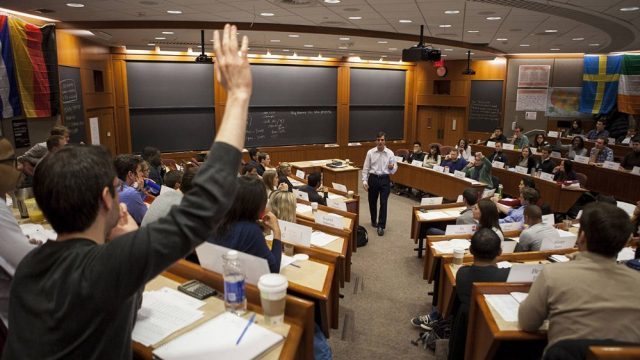Artificial Intelligence & The Perfect Teacher

So far, we’ve taken the liberty of looking at how immersive education can redefine learning in the long term through a primarily experiential approach — we also discussed how data can be collected in those experiences to create truly individualized education, giving developers, teachers and creators unparalleled understanding of the student’s mind in real time.
Let’s extend our imaginations and bit further and imagine how other technologies may converge with immersive media in education — starting with AI.
Artificial Intelligence is one of the most important technologies in the contemporary world, with its influence grasping everything from the creation of medicine, financial market predictions, chatbots and art. It already touches all of our lives in ways we can’t even fathom, and much like the computers and internet we use on a day to day basis, we’re bound to get increasingly dependent on the power it gives us.

AI is already changing the way we interact with our devices — Conversational User Interfaces are an increasingly popular way to control our devices through voice, and it’s not hard to see why. Widely present today in smartphones (Google Assistant, Siri, Cortana) as well as home devices (Amazon Echo, Google Home), it plays into one of the most intuitive ways for humans to get anything done: talking. And given that the technology only gets better every year with continuous advancements in text-to-speech, voice recognition and procedural conversation building, it’s only a matter of a few years before we start to have fully fledged conversations with the devices we own.
So what might happen when we start to combine that power with immersive education?
The beautiful thing about Immersive Media is that it can give physical presence to Artificial Intelligence assistants, chatbots and characters unlike anything we’ve ever been able to do. We’re already on the verge of being able to have conversations with these Artificial Intelligence bots as they stand, but using immersive technologies we will also allow them to have a body and an emotion-expressing face we see, interact and connect with.

Suddenly, the possibility of having a nuanced relationship with your personal A.I. doesn’t seem out of the realm of possibility, and this is could also be a huge deal for education. As the years progress, Artificial Intelligence assistants are bound to understand us more deeply than we’re even capable of knowing ourselves — couple the previously mentioned understanding of a students’ intellect and emotions with the imminent democratization of AI and the door is open to completely functional A.I. teachers that know exactly how to deliver information to you.
AI is learning about us — now it’s only a matter of time before it starts teaching us.
While the concept might seem preposterous for some, it is a real possibility. A quick reflection on how the teacher-student relationship goes shows a very predictable pattern —a teacher performs a lecture, gauges the reaction of students and occasionally diverts from their script to address a question or do an activity before returning to the lecture. Of course, not all classes function in this manner, but the majority of them do, and working on such a predictable framework is not something A.I. will have any trouble doing convincingly as a starting point. Ideally (as the tech improves and issues continue to become more software bound, making them easier to manage) we would find new ways to expand the teacher-student relationship that are less hierarchical and more engaging.

Be mindful that A.I. teachers do not have to look like any one thing in particular — in immersive mediums, artificial intelligence can be characterized in any way given the teaching context. You can be taught by a Dragon, Marie Curie, Neil DeGrasse Tyson or William Shakespeare himself – there’s no theoretical limit over what form or shape A.I. instructors can take for the sake of a lesson — all while creating procedurally generated interactive lectures based on your personal psychological profile.
In the long run, I feel that to truly live up to the dream of individualized education, there’s no other way to achieve it than through A.I. instructors (until we’re able to simply download information into our brain). Their digital presence and limitless access to information can give them abilities and understanding of subjects and students teachers could only dream of.
A.I. has been learning about us for the longest time— now it’s only a matter of time before it starts teaching us.







